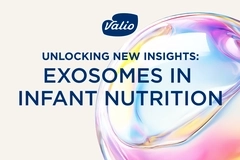Malnutrition alleviation bolstered by tech-derived proteins and micronutrient mixes
11 Jan 2024 --- Strides in ultra-high temperature (UHT) treatment, microparticulation and shelf life stability technologies help companies cost-effectively support malnutrition alleviation. Nutrition Insight sits down with FrieslandCampina Ingredients, Fonterra and dsm-firmenich for an in-depth perspective on the most advanced malnutrition solutions of the era.
“Sixty-four percent of people say they don’t find it easy to use medical nutrition products, with only three in 10 consuming a full serving in one sitting. Texture is a particularly major issue — over half of patients in the US and Europe cite the thickness of a beverage as the reason for not finishing it,” Vicky Davies, the global marketing director of performance, active and medical nutrition at FrieslandCampina Ingredients, tells us.
“Microparticulation is opening up a new era of possibilities in addressing malnutrition. This process is making it easier to deliver the nutritional benefits of whey protein to malnourished people in easy-to-consume formats like compact drinks,” says Davies.
Most whey proteins are irreversibly denatured when heated to high temperatures, causing processing challenges with gelation. “This can not only create issues in production such as blockages, but it also negatively affects sensory appeal and can make end products difficult to consume, which we know is a critical factor for patients with DRM (disease-related malnutrition).”

Safety and shelf life stability
Casein is ideal for high protein liquid formulations for malnourished people because it tolerates high heat treatment processes such as retorting or UHT.
“These processes are a critical requirement for ensuring the safety and shelf life of liquid medical nutrition supplements,” Davies explains. “Whey provides excellent nutrition for people with malnutrition. It’s quickly digested by our bodies and is highly abundant in essential amino acids, especially leucine, which is important for muscle protein synthesis. That said, whey poses a significant formulation challenge for liquid medical applications as it is not easily heat-treated.”
Heat treatment processes can cause whey products to gelate or thicken, resulting in poor sensory qualities in the end product. Innovative ingredients such as microparticulated whey proteins provide a viable solution to these formulation challenges.
Jacqueline van Schaik, Fonterra’s lead nutritionist, proteins and medical, concurs that ingredients made from milk can provide high micronutrient levels such as calcium, potassium and B vitamins. Processing impacts the micronutrient levels, and the right ingredients can optimize the composition of nutrition supplements.
“This is evident in oral supplements for medical nutrition support, which are highly caloric to target malnutrition. The regulation requires full fortification with all necessary vitamins and minerals in levels that fit the level of macronutrients in the product.”
“The higher the level of the energy-providing macronutrients, fat, carbohydrates and proteins, the higher the level of micronutrients must be. Choosing high-quality proteins can be a strategy in itself, such as whey protein isolate. Whey is a fast absorbing protein and the highest in essential amino acids so that it can provide more leucine for muscle protein synthesis in just half the amount,” says Van Schaik.
Cell repair and micronutrient mixes
Protein’s quality depends on its digestibility and amino acid composition. They are essential for cell repair and the generation of new cells. It also plays a vital role in the growth and development of fetuses, children and teenagers.
“The current status of global protein deficiency is quite dramatic with a prediction that 15.1% or 1.4 billion people will be at risk of protein deficiency by 2050 because of demographic changes,” Dr. Juan Barcena, nutrition science and advocacy lead, nutrition improvement at dsm-firmenich, tells us.  Casein, whey protein and leucine are essential components to stave off malnutrition.
Casein, whey protein and leucine are essential components to stave off malnutrition.
The estimate includes 613.6 million people in sub-Saharan Africa, 276.4 million in India, 131.7 million in Eastern and Southeast Asia and the Pacific, 84.4 million in Central Latin America and the Caribbean, and 77.8 million in South Asia.
“For these reasons, it is important to assess which foods could offer the best protein sources for vulnerable populations. In our portfolio, we have plant-based high-quality proteins that are sustainable sources as well,” explains Barcena.
“We offer our support worldwide, but there are some regions with the highest levels of malnutrition, such as Asia, Africa and Latin America, that we prioritize.”
While the health benefits of micronutrient supplements are well-known, the present challenges are increasing adherence to products, expanding the reach of programs, improving the supply chain and manufacturing affordable quality products.
“From an innovation perspective, the goal is to introduce more essential nutrients, such as DHA (docosahexaenoic acid), into supplements in the most cost-effective way. We provide MMS (Multiple Micronutrient Supplements) for pregnant and lactating women with 30 months stability data and micronutrient powders with 36 months stability data, which young children can easily consume between six months and five years old,” says Barcena.
In the Western general adult population, overweight people with an imbalanced diet can suffer from malnutrition. This group would benefit from high protein supplements to support muscle mass but lower calories to allow people to lose weight, preferably in fat.
“Elderly people with a lack of appetite present a different challenge because they are a heterogeneous population. More protein can be combined with energy depending on the severity of weight loss,” explains Van Schaik.
Providing protein and energy can have weight and muscle maintenance benefits for elderly, malnourished people. B vitamins that support energy metabolism and ingredients that improve mobility or help gastric comfort can have a more significant effect.
“These ingredients, including fatty acids and probiotics, may be naturally present but can also easily be added to dairy-based solutions,” she says.
Conserving lean muscle mass
Although malnutrition is a global issue, about 33 million people are at risk of becoming malnourished in Europe, mainly older adults or unwell people. A quarter of hospitalized people and about a third in care homes have DRM.
“Maintaining lean muscle mass can help facilitate healing in these populations, and protein plays an essential role here. Studies have shown that high-quality protein that provides essential amino acids supports muscle protein synthesis in older adults, which can help build resilience and support recovery from illness,” explains Davies.
However, in the case of DRM, it’s not as simple as adding high protein foods to the person’s diet. “‘Adequate’ levels can be very high and people with DRM often have significantly reduced appetite. To put it into perspective, a healthy adult only needs 0.8 g protein/kg body weight per day, but frail older people and those with acute or chronic illness often require almost double — up to 1.5 g,” she underscores.
“This can be challenging to achieve in a normal diet, so protein is often delivered in liquid formats which are compact and easier to consume than high protein foods like meat and cheese or protein bars.”
Fonterra advocates for milk proteins to cure malnutrition because they are high in essential amino acids, especially leucine, which is vital in maintaining muscle mass, especially during periods of heightened protein breakdown. Proteins are vital to maintain quality of life and support muscle maintenance.
“Leucine is a key trigger for muscle protein synthesis, making it easier to get to the required amount with milk proteins and successfully maintain or build muscle. Therefore, sufficient intake or diet supplementation with milk proteins is preferred,” explains Van Schaik.
Food fortification strategies Companies are interested in creating micronutrients that are more bioavailable and cost-effective (Credit: World Food Programme).
Companies are interested in creating micronutrients that are more bioavailable and cost-effective (Credit: World Food Programme).
According to dsm-firmenich, large-scale food fortification is the most cost-effective strategy for reducing micronutrient gaps; therefore, the company offers solutions for fortified rice, oil, wheat and maize flour.
“Through a new industry-led coalition, Millers for Nutrition is on a mission to reach one billion people worldwide with adequately fortified rice, edible oil and flour by 2026,” says Barcena. The coalition champions food fortification as a viable solution to address hidden hunger in Bangladesh, Ethiopia, India, Indonesia, Kenya, Nigeria, Pakistan and Tanzania.
It advocates for millers from Africa and Asia to join. Members can access free technical training, business advice, product testing support, online tools and resources. “The situation is alarming. Approximately 29.6% of the global population, equivalent to 2.4 billion people, do not have constant access to food,” Barcena laments.
“We need to maintain and strengthen collaboration between the public-private sector to address and revert this situation.”
Cost-effectiveness and food system goals
Companies are prioritizing strategies to make products more cost-effective and make stable micronutrient ingredients that improve the bioavailability of critical minerals, including iron and zinc, which can be done by adding the phytase enzyme.
Fonterra is dedicated to supporting the UN SDGs and is actively engaged in collaborative efforts to be realized by 2030. The company has partnered with “No Kid Hungry” in the US and in Ethiopia the focus is on enhancing the accessibility and affordability of healthy foods.
“Through our commercial activities, we have launched Anmit, a drinkable porridge developed in collaboration with local stakeholders and fortified with nutrients tailored to local needs,” Van Schaik says.
“In Malaysia, our Eat Well with Fonterra initiative underscores our commitment to community care. Teaming up with Yayasan Food Bank Malaysia, we promote sustainable and balanced meal plans for fifty lower-income families.” The initiative involves providing one month of education on balanced diets through weekly groceries and nutritious meal plans.
By Inga de Jong















